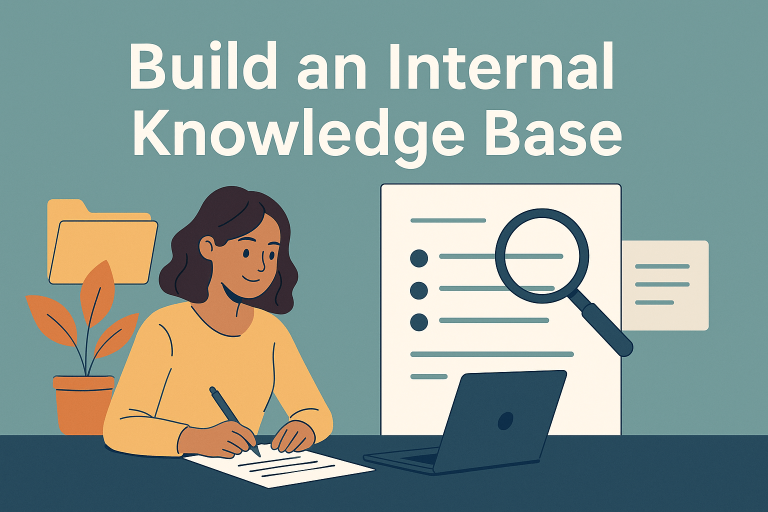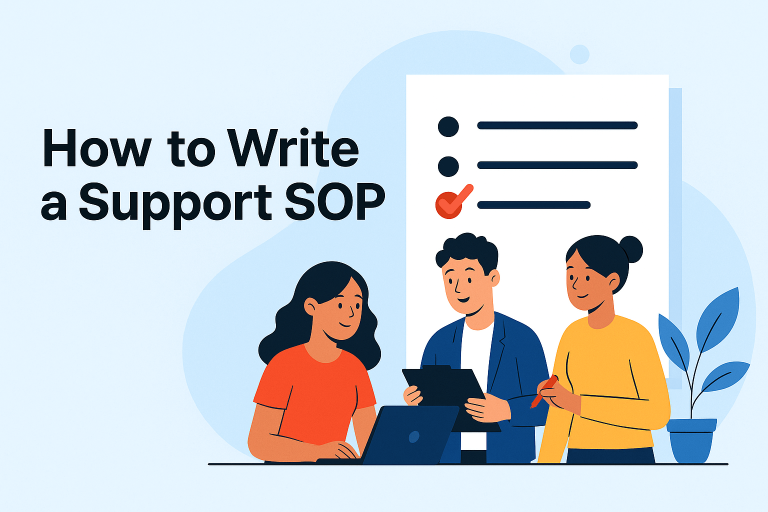How to Structure an Effective Support Escalation Process
If your support team ever feels like it’s constantly passing the pain upwards, your support escalation process might be the problem.
A well-structured escalation process isn’t just about moving tickets to Tier 2 or Dev — it’s about creating clarity, preserving response times, and making sure issues land in the right hands with the right context.
Done right, it reduces stress, restores confidence, and tightens alignment between support, product, and engineering.
Done poorly? It creates SLA breaches, frustration, and dropped issues.
Let’s break down what a high-performing support escalation process looks like — and how you can build one into your team without overcomplicating things.
Why Support Escalation Processes Break Down
Escalation gaps are common — especially in fast-moving or scaling teams. You’ll often see:
- No shared trigger definitions — “When do I escalate this?”
- Over-escalation — everything lands in Dev’s lap
- No post-escalation visibility — the issue “disappears”
- Slack/DM escalations — undocumented and untrackable
- SOPs that exist, but aren’t used
These patterns aren’t about bad teams — they’re symptoms of missing structure.
The 4 Pillars of a Strong Support Escalation Process
1. Clear Triggers for Escalation
Escalation triggers should be based on:
- Time — e.g. “No progress after 2 hours on P1”
- Scope — e.g. “Requires code-level investigation”
- Impact — e.g. “Multiple customers affected or system-wide degradation”
The goal is to reduce friction and ambiguity — agents should know exactly when to escalate, and when to hold the line.
Toolkit tie-in: The Opsaris Escalation Matrix includes example triggers for each priority level, so you can plug and play.
2. Defined Routing Paths
Once escalation is triggered, where does the ticket go — and who owns it?
- Route by module or issue type (e.g. DB issues → Infra team, UI bugs → Frontend lead)
- Use named roles, not just teams (“escalate to Emma, not just ‘Dev’”)
- Avoid escalation by chat — it’s invisible to your system, and often forgettable
Pro Tip:
Keep routing paths lightweight and visual — ideally embedded directly into SOPs or your ticketing tool.
3. Post-Escalation Ownership
An escalated issue is still your issue — it just has new collaborators.
Define:
- Who logs updates in the system
- What the expected response timelines are
- When the issue is considered “owned” again by support
Escalation ≠ hand-off. Support stays in the loop until resolution.
4. Feedback and Closure Loops
After the issue is resolved:
- Was the root cause documented?
- Were SOPs or KBs updated?
- Was the team debriefed?
That last loop is the difference between fixing an issue and improving your system. Once you get these feedback loops dialled, you should start to see some pleasant surprises in your weekly/monthly support KPIs. You can find guidance on how to monitor these in our post here – 7 essential support team KPIs.
Good escalation design isn’t just about flow — it’s about learning.
What to Include in Your Escalation Matrix
Every support team should maintain a simple, visible Escalation Matrix. Yours should include:
| Field | Example |
|---|---|
| Severity Level | P1, P2, P3 |
| Trigger Conditions | “System outage”, “No resolution in 2 hrs” |
| Escalation Contact | Dev Lead, Product Manager |
| Escalation Method | Jira + Teams with link |
| Target Response Time | Within 30 minutes for P1 |
| Post-Escalation Owner | Assigned engineer + support liaison |
You should be able to onboard a new team member and have them using this within a week.
Want to go one step further? Implement a Tiered Support Model for even cleaner and more effectively targeted escalations.
Why This Matters for Support Operations
Escalation processes are a stress test for support maturity.
If they’re informal, inconsistent, or invisible — that shows up in:
- Missed SLAs
- Poor cross-team relationships
- Reopened tickets
- Repeated incidents
- Frustrated customers
With a structured process, escalation becomes a tool — not a bottleneck.
If you follow ITIL 4 best practices, escalation processes are a key part of Incident Management and Service Level Management frameworks.
- Incident Management
- Service Level Management
- Continual Improvement
For a practical example of structuring your escalation procedures, consider this ITIL Incident Escalation Template from ITSM Docs.
The Opsaris Support Ops Toolkit
We’ve been trying to apply all of these principles across our support operations, so we put together this toolkit. This isn’t theory. The Opsaris Support Ops Toolkit includes templates to help you hit the ground running – Escalation Matrix, SOPs, KPI trackers, and more.
Whether you’re refining what you have, or starting from scratch, this gives you a scalable framework that works from day one.
Final Thought
If your team is drowning in escalations, struggle through unclear boundaries, or often face slow Dev handovers — you’re not alone.
But it’s fixable. And once it’s fixed, your support team becomes faster, calmer, and more trusted.
Start by writing it down. Make it visible. Make it repeatable.







